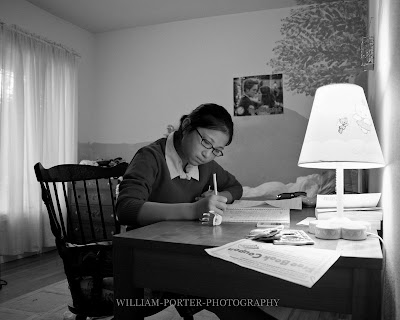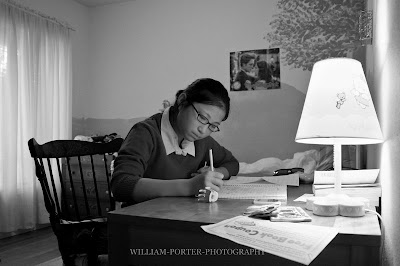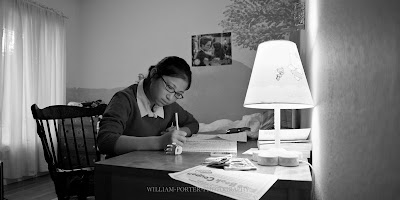To crop, or not to crop?
It's not an easy matter to decide.On a purely practical level, anybody who sells prints to clients as I do, has to accept the fact that clients have their own ideas about print and frame sizes. The sensors in all of my Pentax cameras have an aspect ratio of 2/3, that is, the short side of the sensor and thus of the resulting image is 2/3 as long as the long side. If I put the photo online with its original aspect ratio, it will print nicely at (say) 4" x 6" or 8" x 12". Unfortunately, a client might want a 5" x 7" print because that's the size frame she's got to fill. If I filled my viewfinder perfectly when I composed the shot, cropping to 5" x 7" might require doing violence to the image, like chopping off the top of somebody's head. When I'm shooting for clients, I make an effort to capture a little more than I think ideal to frame the photo, precisely to provide cropping room to accommodate different aspect ratios.
On the other hand, most images do have a "right" aspect ratio. At least I think that's the case. And unfortunately it's not always 2/3. Especially when I'm shooting for myself, I will crop the picture in post-processing in the way that seems right to me. For a shot of the Grand Canyon, that might mean an aspect ratio of 1/3 or even wider. Occasionally, 1x1 seems right. But the right aspect ratio isn't always obvious, even after I review the photo on my computer.

Catherine studying
Walking down the hall this afternoon, I peeked into Catherine's room and saw her studying, and I could see at a glance that it would make an interesting photo. So I grabbed the camera, came back, and as politely and unobtrusively as possible, I squatted down and took two quick shots. The shot above is what the camera saw, at its native aspect ratio of 2/3.I rather like the photo just the way I took it. But as I was making the black and white conversion in Adobe Lightroom 3 beta, I began to wonder if all that blank wall on the right side of the photo was good. Or rather, I began to suspect that it was accidental, just wasted space that was there because of my vantage point. So I cropped it out:

That's okay, I said to myself, but for some reason it seems rather boring now, a mere snapshot, when the scene that I was pretty sure I saw had struck me as more interesting. You see, once you actually look at the photo, it's often hard to remember what you were thinking of when you took it. Actually, I quite frequently ask myself, "What the hell was I thinking of when I took this photo?"
Anyway, at this point, I was starting to guess. And I guessed that the problem now was that there was too much of the ceiling in the upper background. So I cropped that out too:

But that was clearly going in the wrong direction. So I went back to the original photo and thought about it for a few seconds more. And a lightbult went off in my head. The blank wall on the right was important to the photo, because it very nicely balances the wall and the curtained window on the left. But there was extraneous stuff above and below the interesting horizontal center area of the photo. So I changed my crop ratio to 1/3, et voila!

That is the picture I saw initially, the picture I meant to take. At least, I think so. It's better than the previous two crops. I think it's an improvement over the original photo, too, but I'm less sure of that. Unfortunately, it's going to be a pain to print and frame!
![William Porter Photography [2009-10]](http://3.bp.blogspot.com/-BdmG2FltN6U/VWc8FvPTYkI/AAAAAAAAAJ4/jMlVI5GGDYM/s1600/GOOGLE%2B320x132.png)
